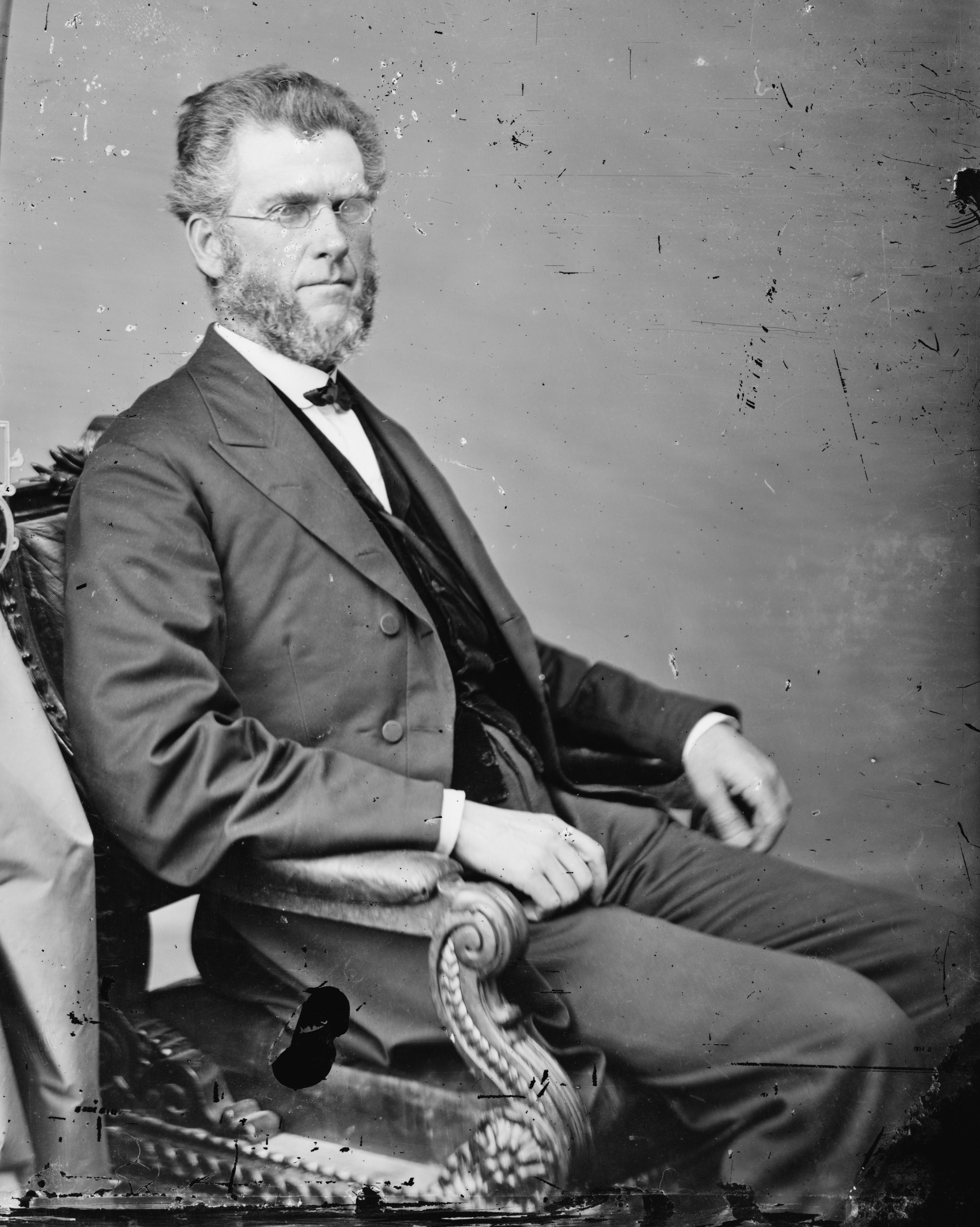|
Brownville, Nebraska
Brownville is a village in Nemaha County, Nebraska, United States. The population was 142 at the 2020 census. History Established in 1854 and incorporated in 1856, Brownville was the largest town in the Nebraska Territory, with a population of 1,309 by 1880. Bordering slave-holding Missouri, the town became an important port on the Missouri River. Daniel Freeman, the first homesteader to file a claim under the Homestead Act of 1862, staked his claim at a New Year's Eve party in Brownville. The rise of the railroad was ultimately Brownville's undoing. The railroads siphoned traffic away from the Missouri River's steamboats. Brownville's attempt to secure a railroad of its own was severely botched and led to immense tax increases to pay the bonds for the failed venture. This drove most of the population away and led to the county seat being transferred to Auburn in 1885. [...More Info...] [...Related Items...] OR: [Wikipedia] [Google] [Baidu] |
Village (United States)
In the United States, the meaning of village varies by geographic area and legal jurisdiction. In many areas, "village" is a term, sometimes informal, for a type of administrative division at the local government level. Since the Tenth Amendment to the United States Constitution prohibits the federal government from legislating on local government, the states are free to have political subdivisions called "villages" or not to and to define the word in many ways. Typically, a village is a type of municipality, although it can also be a special district or an unincorporated area. It may or may not be recognized for governmental purposes. In informal usage, a U.S. village may be simply a relatively small clustered human settlement without formal legal existence. In colonial New England, a village typically formed around the meetinghouses that were located in the center of each town.Joseph S. Wood (2002), The New England Village', Johns Hopkins University Press Many of these colon ... [...More Info...] [...Related Items...] OR: [Wikipedia] [Google] [Baidu] |
Augustus Kountze
Augustus Kountze (November 19, 1826–April 30, 1892) was an American businessman based in Omaha, Nebraska, Kountze, Texas and New York City. He founded a late 19th-century national banking dynasty along with his brothers Charles, Herman and Luther."August Kountze obituary" ''New York Times.'' May 1, 1892. Retrieved 1/28/08. In 1861, Augustus was named Treasurer of the Nebraska Territory, and in 1867 was named the first Treasurer of the [...More Info...] [...Related Items...] OR: [Wikipedia] [Google] [Baidu] |
Herman Kountze
Herman Kountze (August 21, 1833 – November 20, 1906) was a powerful and influential pioneer banker in Omaha, Nebraska, during the late 19th century. After organizing the Kountze Brothers Bank in 1857 as the second bank in Omaha, Herman and his brothers Augustus, Charles and Luther changed the charter in 1863, opening the First National Bank of Omaha that year. Kountze was involved in a number of influential ventures around Omaha, including the development of the Omaha Stockyards and the Trans-Mississippi and International Exposition of 1898. Immediately after his death Kountze was regarded as one of Omaha's "old settlers". Today Kountze's First National Bank is the oldest bank west of the Mississippi River, and continues as a privately held company in its sixth generation of family ownership. Biography Herman Kountze was born August 21, 1833, in Osnaburg, Ohio, one of twelve children born to Christian and Margaret Kountze. After leaving his father's mercantile busines ... [...More Info...] [...Related Items...] OR: [Wikipedia] [Google] [Baidu] |
Governor Of Nebraska
The governor of Nebraska is the head of government of the U.S. state of Nebraska as provided by the fourth article of the Constitution of Nebraska. The officeholder is elected to a four-year term, with elections held two years after presidential elections. The governor may be elected any number of times, but not more than twice in a row. The current officeholder is Pete Ricketts, a Republican Party (United States), Republican, who was sworn in on January 8, 2015. The current List of lieutenant governors of Nebraska, Lieutenant Governor of Nebraska is Mike Foley (Nebraska politician), Mike Foley, who also assumed office on January 8, 2015. Governors of Nebraska must be at least 30 years old and have been citizens and residents of the state for five years before being elected. Before 1966, the governor was elected to a two-year term. In 1962, a constitutional amendment extended the gubernatorial term to four years, effective with the 1966 Nebraska gubernatorial election, 1966 electio ... [...More Info...] [...Related Items...] OR: [Wikipedia] [Google] [Baidu] |
United States Senate
The United States Senate is the upper chamber of the United States Congress, with the House of Representatives being the lower chamber. Together they compose the national bicameral legislature of the United States. The composition and powers of the Senate are established by Article One of the United States Constitution. The Senate is composed of senators, each of whom represents a single state in its entirety. Each of the 50 states is equally represented by two senators who serve staggered terms of six years, for a total of 100 senators. The vice president of the United States serves as presiding officer and president of the Senate by virtue of that office, despite not being a senator, and has a vote only if the Senate is equally divided. In the vice president's absence, the president pro tempore, who is traditionally the senior member of the party holding a majority of seats, presides over the Senate. As the upper chamber of Congress, the Senate has several powers ... [...More Info...] [...Related Items...] OR: [Wikipedia] [Google] [Baidu] |
Thomas Weston Tipton
Thomas Weston Tipton (August 5, 1817November 26, 1899) was a Senator from Nebraska. Biography Tipton was born in Cadiz, Ohio, and attended Allegheny College, Meadville, Pennsylvania. He pursued classical studies and graduated from Madison College, Pennsylvania, in 1840. He studied law and was admitted to the bar in 1844. He was a member of the Pennsylvania House of Representatives in 1845. He was appointed to a position in the United States Land Office from 1849 to 1852; he then resumed the practice of law in McConnelsville, Ohio, in 1853. He was ordained a minister of the Methodist Episcopal Church in 1856. Around 1859, he moved to Brownville, Nebraska and joined the Congregational Church. He was a member of the 1859 Nebraska constitutional convention and the Nebraska Territory council in 1860. During the American Civil War, Tipton was appointed chaplain of the First Regiment, Nebraska Volunteer Infantry 1861–1865. He was the assessor of internal revenue for Nebraska in 1 ... [...More Info...] [...Related Items...] OR: [Wikipedia] [Google] [Baidu] |
Auburn, Nebraska
Auburn is a city in Nemaha County, Nebraska, United States, and its county seat. The population was 3,470 at the 2020 census. History Auburn is an incorporation of two towns. Calvert and Sheridan combined to form Auburn in 1882, in part to have the voting power to wrestle the county seat away from Brownville, Nebraska, a village located ten miles east. The incorporation was successful, and in 1883, Auburn was named the county seat. The city is named after Auburn, New York. The only person to be elected to the United States Congress as a member of the Prohibitionist Party, Charles Hiram Randall, was born in Auburn on July 23, 1865. From 1910 to 1913, Auburn was home to the Auburn Athletics, a Class C level minor league baseball team. The Auburn Athletics played as members of the Missouri-Iowa-Nebraska-Kansas League for the duration of the league. The Auburn Athletics played home games at the Legion Memorial Park. Still in use today, Legion Memorial Park is designated as ... [...More Info...] [...Related Items...] OR: [Wikipedia] [Google] [Baidu] |
Bond (finance)
In finance, a bond is a type of security under which the issuer ( debtor) owes the holder ( creditor) a debt, and is obliged – depending on the terms – to repay the principal (i.e. amount borrowed) of the bond at the maturity date as well as interest (called the coupon) over a specified amount of time. The interest is usually payable at fixed intervals: semiannual, annual, and less often at other periods. Thus, a bond is a form of loan or IOU. Bonds provide the borrower with external funds to finance long-term investments or, in the case of government bonds, to finance current expenditure. Bonds and stocks are both securities, but the major difference between the two is that (capital) stockholders have an equity stake in a company (i.e. they are owners), whereas bondholders have a creditor stake in a company (i.e. they are lenders). As creditors, bondholders have priority over stockholders. This means they will be repaid in advance of stockholders, but will rank b ... [...More Info...] [...Related Items...] OR: [Wikipedia] [Google] [Baidu] |
Steamboat
A steamboat is a boat that is propelled primarily by steam power, typically driving propellers or paddlewheels. Steamboats sometimes use the prefix designation SS, S.S. or S/S (for 'Screw Steamer') or PS (for 'Paddle Steamer'); however, these designations are most often used for steamships. The term ''steamboat'' is used to refer to smaller, insular, steam-powered boats working on lakes and rivers, particularly riverboats. As using steam became more reliable, steam power became applied to larger, ocean-going vessels. Background Limitations of the Newcomen steam engine Early steamboat designs used Newcomen steam engines. These engines were large, heavy, and produced little power, which resulted in an unfavorable power-to-weight ratio. The Newcomen engine also produced a reciprocating or rocking motion because it was designed for pumping. The piston stroke was caused by a water jet in the steam-filled cylinder, which condensed the steam, creating a vacuum, which in turn caus ... [...More Info...] [...Related Items...] OR: [Wikipedia] [Google] [Baidu] |
Railroad
Rail transport (also known as train transport) is a means of transport that transfers passengers and goods on wheeled vehicles running on rails, which are incorporated in tracks. In contrast to road transport, where the vehicles run on a prepared flat surface, rail vehicles ( rolling stock) are directionally guided by the tracks on which they run. Tracks usually consist of steel rails, installed on sleepers (ties) set in ballast, on which the rolling stock, usually fitted with metal wheels, moves. Other variations are also possible, such as "slab track", in which the rails are fastened to a concrete foundation resting on a prepared subsurface. Rolling stock in a rail transport system generally encounters lower frictional resistance than rubber-tyred road vehicles, so passenger and freight cars (carriages and wagons) can be coupled into longer trains. The operation is carried out by a railway company, providing transport between train stations or freight customer f ... [...More Info...] [...Related Items...] OR: [Wikipedia] [Google] [Baidu] |
New Year's Day
New Year's Day is a festival observed in most of the world on 1 January, the first day of the year in the modern Gregorian calendar. 1 January is also New Year's Day on the Julian calendar, but this is not the same day as the Gregorian one. Whilst most solar calendars (like the Gregorian and Julian) begin the year regularly at or near the northern winter solstice, cultures that observe a lunisolar or lunar calendar celebrate their New Year (such as the Chinese New Year and the Islamic New Year) at less fixed points relative to the solar year. In pre-Christian Rome under the Julian calendar, the day was dedicated to Janus, god of gateways and beginnings, for whom January is also named. From Roman times until the middle of the 18th century, the new year was celebrated at various stages and in various parts of Christian Europe on 25 December, on 1 March, on 25 March and on the movable feast of Easter. In the present day, with most countries now using the Gregorian cale ... [...More Info...] [...Related Items...] OR: [Wikipedia] [Google] [Baidu] |
.jpg)


.jpg)

